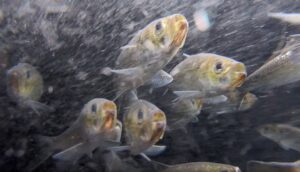WELLFLEET — The alewives — also known as river herring — are coming home, though they’re not here to stay. They come to the Cape every spring and stay for only a few weeks to lay their eggs in some of our freshwater ponds, and by summer they’ll have left again, gone back out to sea.
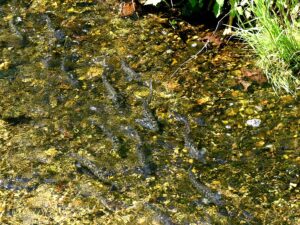
Alewives, like salmon and striped bass, are anadromous, meaning they travel up rivers to spawn but spend most of their lives in the ocean. Alewives used to be an important part of Massachusetts’s culture and economy, according to biologist Barbara Brennessel, author of The Alewives’ Tale — but overfishing, climate change, and development have led to their long decline.
In recent years, hope for a river herring recovery has come up against a threat at sea: mid-water trawling. Mid-water trawlers work in pairs, pulling football-field-size nets to harvest huge volumes of fish. Mid-water trawlers target Atlantic herring, but they end up taking alewives, too, which commingle with Atlantic herring at sea.
Eastham Conservation Foundation President Henry Lind, who oversees Eastham’s annual herring counts, said mid-water trawling “appears to be the biggest problem” the species now faces.
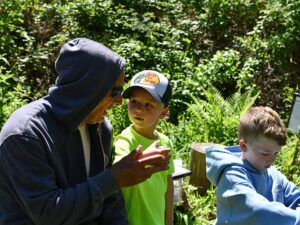
Just how to assess its effects is unclear. As the Independent has reported, in 2021 the National Oceanic and Atmospheric Administration (NOAA) banned mid-water trawling within 20 miles of Cape Cod — a move local small-boat fishermen supported. But a court case reversed that policy the next year. Then in 2023, NOAA suspended the monitoring program that collects data on bycatch aboard commercial vessels, apparently for lack of funding.
This year, the lack of data has been made worse, Lind said, by funding cuts at NOAA made by Elon Musk’s so-called Dept. of Government Efficiency. Bourne resident Sarah Cierpich, who managed NOAA’s observer deployment systems in Woods Hole, was terminated in February as part of those cuts.
Counting on Cape Cod
Still, work goes on in our small towns to estimate the number of alewives that survive in the wild here. The Association to Preserve Cape Cod (APCC) oversees a yearly count of herring, conducted as the fish swim upstream to spawn. The association’s effort, which is funded through MassBays, an estuary protection program created under Section 230 of the Clean Water Act, involves volunteers in towns across the Cape.
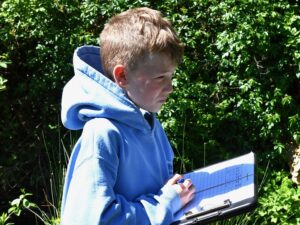
This year’s count started on April 1, and a final tally will be published sometime after the counting ends on June 15, according to Mike Palmer, a restoration ecologist at APCC and coordinator of the volunteer monitoring program.
Brennessel oversees Wellfleet’s herring count, which began in 2009. She and other volunteers carry out semi-random sampling, spending nine 10-minute intervals every day of the count logging the fish that pass through a narrow bend of the Herring River off Old Kings Highway.
By now, Brennessel said, most of the herring have already braved their perilous journeys to the ponds, dodging predators like raccoons and snapping turtles on the way. She’ll call an end to the Wellfleet count soon, since most of the fish her counters have seen in recent weeks have been schools returning to the sea.
Some years the data is encouraging, others not so much, Brennessel said. Last year, her team counted 3,291 fish over 550 observation periods, leading the Mass. Div. of Marine Fisheries to estimate a total of 19,781 herring using the run that year. That’s less than the estimated yearly average of 26,974, and much less than the 2023 estimate of 65,529 herring — a record for Wellfleet’s run, based on 7,040 fish counted over 495 observation periods.
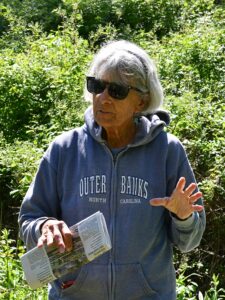
One of the most frustrating parts of counting herring is the lack of a clear trend across the towns. Despite being a record year for Wellfleet’s run, 2023 was a below average year on Eastham’s own Herring River, which drains into Bridge Pond near Wiley Park. Last year, counters at that run saw 287 herring over 334 observation periods — the DMF estimated 2,857 fish in total. Counters at the second Eastham run, which feeds from Bee’s River into Herring Pond, saw 45 fish over 337 observation periods for an estimated total of 468. Both totals are well below the runs’ averages of 4,845 fish and 1,208 fish, respectively.
Lind said that both of Eastham’s runs were hand-dug: the Bridge Pond run in the mid-1800s and the Herring Pond run in 1984 to restore the habitat after all the pond’s herring were killed in the 1960s to turn it into a spot for recreational trout fishing. When the Herring Pond run was dug, Lind said, the fish were brought to the pond in buckets from the Bridge Pond run.
Lind said that digging runs by hand in the 1800s was relatively common, and generally the herring would be harvested by the digger.
It’s a tradition that predates European settlers on Cape Cod, according to Brennessel. “People have known these fish need a path between fresh and salt water for as long as people have existed,” she said.
